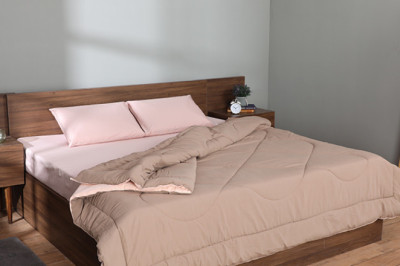views
Designing the interior of your home is not just about selecting beautiful furniture or choosing trendy wall colors—it's about creating a space that reflects your personality, supports your lifestyle, and brings comfort, function, and beauty together in harmony.
Whether you're furnishing a new home or revamping an existing one, a thoughtful approach to interior design can turn your space into a sanctuary. Below is a step-by-step guide to help you get started with the interior design process for your home.
Step 1: Understand Your Space and Lifestyle
Before diving into styles and mood boards, assess the space:
-
How is the layout?
-
What are the dimensions and architectural features?
-
Where does natural light enter?
Most importantly, consider your lifestyle. A home for a large family will differ greatly from one for a single professional or a couple who love hosting guests. Every design decision should align with how you live in your home.
Step 2: Define Your Interior Design Goals
Ask yourself:
-
Do you want a cozy atmosphere or a sleek, modern vibe?
-
Is functionality or aesthetic your top priority?
-
Are you designing for comfort, luxury, practicality—or all three?
Set a clear vision before you begin. Whether you’re focusing on one room or the entire home, having defined objectives will keep your design process focused and efficient.
Step 3: Choose a Style That Resonates with You
There are many interior design styles to explore, including:
-
Modern – Minimalist, clean lines, open spaces
-
Traditional – Classic furniture, warm tones, ornate details
-
Scandinavian – Light, functional, and nature-inspired
-
Industrial – Raw textures, exposed pipes, neutral colors
-
Bohemian – Eclectic, colorful, layered and artistic
You may prefer a mix of styles—that's perfectly fine! Just be sure your choices are cohesive and reflect your personality.
Step 4: Create a Mood Board or Visual Plan
Collect images, color swatches, furniture ideas, and materials to create a visual direction for your space. Tools like Pinterest, Canva, or even a physical board can help you organize and refine your aesthetic.
Don’t underestimate this step—it helps you avoid impulsive decisions and keeps you on track with your budget and style goals.
Step 5: Focus on Layout and Furniture Placement
Plan the furniture layout carefully:
-
Start with the largest pieces (sofa, bed, dining table)
-
Ensure there’s enough space to walk around comfortably
-
Arrange for balance and flow between rooms
Consider how each area will be used. For example, a living room should have both conversation areas and pathways, while a bedroom should feel restful and uncluttered.
Step 6: Select Materials, Colors, and Textures
This is where your space comes to life. Select:
-
Color palettes that suit the room’s function (cool tones for calm, warm tones for energy)
-
Materials that are durable and reflect your style (wood, metal, glass, fabric, etc.)
-
Textures to add depth and comfort (rugs, curtains, cushions, wall finishes)
Use contrast to your advantage, and remember: harmony is key. Even bold choices should complement the overall vibe.
Step 7: Lighting Design is Everything
Lighting can transform a room. Aim to incorporate three layers of lighting:
-
Ambient (general lighting like ceiling fixtures)
-
Task (desk lamps, kitchen lights, vanity lights)
-
Accent (highlighting art, shelves, or architectural details)
Natural light should be optimized with windows, mirrors, and light-reflective surfaces.
Step 8: Personalize with Accessories and Art
Once the foundations are set, add your personal touch:
-
Artworks, photo frames, souvenirs
-
Indoor plants for freshness
-
Unique textiles (throws, pillows, rugs)
These details give your home soul and make it feel like truly yours.
Step 9: Stay Flexible and Iterate
Interior design is an evolving process. You don’t need to finalize everything at once. Sometimes, the best results come from living in the space and making gradual changes.
Be open to updates and refinements over time as your lifestyle or preferences evolve.
Final Thoughts
Designing your home’s interior is a creative journey, not a checklist. By understanding your needs, defining a clear vision, and following a thoughtful process, you can build a space that’s both functional and beautiful.
Whether you choose to DIY or work with a professional interior designer, remember: your home should be a reflection of who you are. Take your time, trust your instincts, and enjoy the process.
What Are the Basics of Interior Design? A Detailed Explanation
Interior design is more than just choosing furniture or painting walls—it's a thoughtful process that combines creativity, functionality, and structure to create a space that feels cohesive and serves its intended purpose. Here are the fundamental principles that form the basics of interior design:
1. Balance
Balance refers to the distribution of visual weight in a room. It can be:
-
Symmetrical: where both sides of a space mirror each other.
-
Asymmetrical: where balance is achieved through contrasting elements of equal visual interest.
-
Radial: where elements radiate from a central point (like a round table with chairs).
A well-balanced room feels stable and harmonious.
2. Harmony and Unity
These principles ensure that all elements in a room work together to create a cohesive design. Colors, patterns, and materials should complement each other and contribute to a unified theme or style.
For example, a minimalist room with neutral tones and clean lines should maintain that theme throughout.
3. Rhythm and Repetition
Rhythm in design creates movement and leads the eye around the room. This is achieved through:
-
Repetition of shapes, colors, or textures
-
Gradation (a gradual increase or decrease in size or color)
-
Transition (using lines or curves to guide the eye)
Using rhythm thoughtfully adds interest without overwhelming the space.
4. Contrast
Contrast is key to making a space dynamic. This could be:
-
Light vs. dark colors
-
Smooth vs. rough textures
-
Modern vs. vintage furniture
Contrast highlights important elements and adds visual excitement.
5. Scale and Proportion
These concepts relate to the size of objects in relation to each other and the space. Furniture and décor should be appropriately sized—not too big or too small.
For example, a large sofa in a small living room can make the space feel cramped, while tiny furniture in a large space may feel lost.
6. Color
Color affects mood, perception of space, and overall aesthetics. Warm colors (reds, oranges) create energy, while cool colors (blues, greens) promote calm. Neutral colors are versatile and timeless.
Choosing the right color palette is essential for both function and style.
7. Lighting
Lighting shapes how a space looks and feels. There are three main types:
-
Ambient lighting: general illumination (ceiling lights, chandeliers)
-
Task lighting: focused light for specific activities (reading lamps, kitchen lights)
-
Accent lighting: highlights features (art, shelves, textures)
Layered lighting creates depth and functionality.
8. Space Planning
Effective space planning ensures rooms are both functional and comfortable. This involves:
-
Understanding traffic flow
-
Maximizing usable space
-
Considering how the room will be used daily
A well-planned space feels natural and easy to move through.
9. Texture and Materials
Mixing different textures—such as wood, metal, glass, fabric—adds depth and interest. A room with flat surfaces can feel dull, while layered textures feel warm and inviting.
10. Personal Touch
Finally, a well-designed interior reflects the personality of the homeowner. This could be through artwork, family heirlooms, books, or favorite colors.
Personal elements make a house feel like a home.
Conclusion
Mastering the basics of interior design allows you to create environments that are not only beautiful but also functional and deeply personal. Whether you're designing a single room or an entire home, these principles provide a strong foundation for any successful design.












